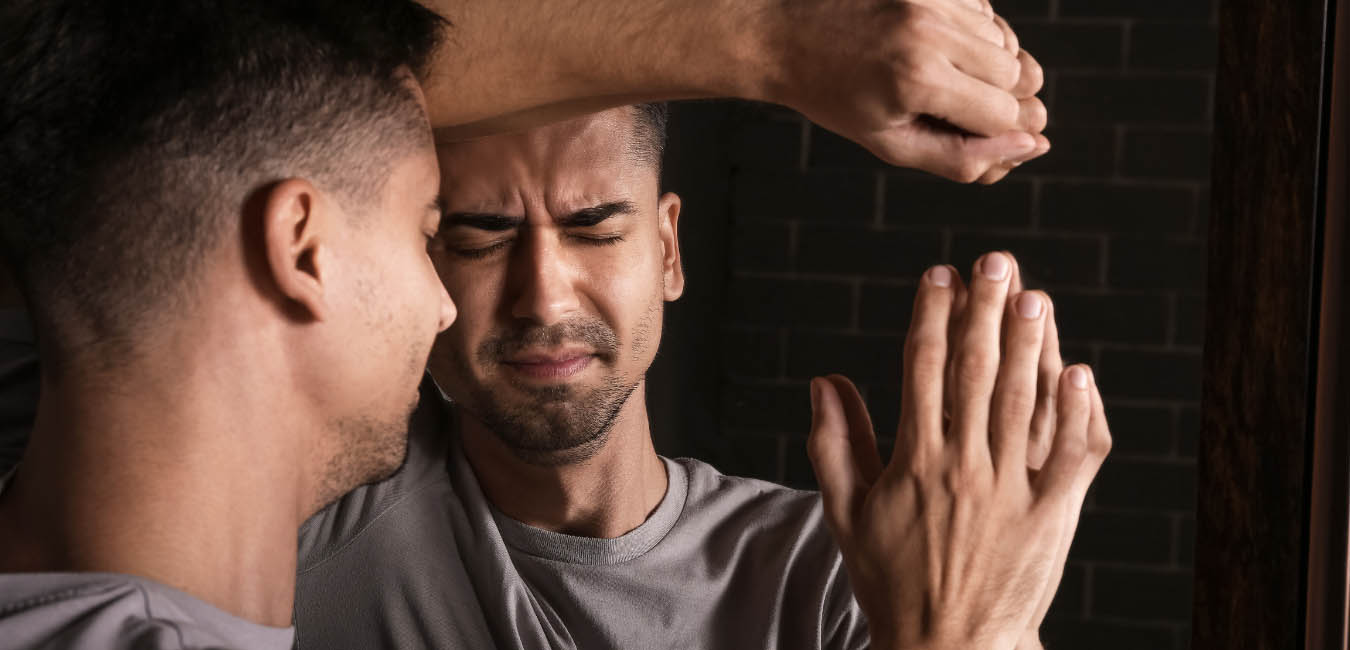Masculinity is strong but not controlling and secure without being arrogant. And masculine men should definitely drink the pink milk their tutu-wearing daughter brings them while they’re trying to record a podcast.
These are just some of the things Ed Tilton, Regional Director of Integrative Life Network, discussed with Tom Gentry on the “Men Who Talk” podcast about toxic masculinity.
Ed’s daughter thoughtfully brought him strawberry milk while he was recording. His gracious acceptance became an example of masculinity for discussion.
“My relationship with her is that I am somebody who can be safe, and I can be open and accepting, and that I can provide for and protect her,” he said.
The men went on to talk about the differences between masculinity and toxic masculinity, why they occur, and how damaging they can be.
What’s the Difference Between Masculinity and Toxic Masculinity?
Masculinity is the traits that people associate with men and boys. For example, men are “always strong and courageous.” Toxic masculinity comes from fear of and insecurity about not being “strong and courageous,” Ed said. He said it’s when men want power and control to avoid appearing weak or afraid.
“When you take credit for everything, getting help becomes a threat,” he stated.
Traits of toxic masculinity include:
- Fear and suppression of emotions
- Physical aggression
- Extreme independence
- Feelings of superiority
- Thinking the world owes you something
To be a healthy, balanced man, you must realize that you need help — you can’t do everything, Ed said. This understanding means you have a responsibility to others and the community that helps you succeed, he said.
“Healthy masculinity and the healthy identity, in general, is rooted in connection and community,” he said. “Rarely do I see a self-made man that doesn’t have people around him helping him get to where he is.”
Healthy men recognize that they get help from people and should assist others, too, Ed said.
“You can’t be of service to others if you’re busy being idolized,” he said. “Part of healthy masculinity is knowing you can be a protector and ask for protection. The two — asking for help and receiving help — are not in conflict with each other.”
Traits of healthy masculinity include:
- Being honest with yourself about your feelings and needs
- Encouraging compassion and kindness
- Helping others and embracing help from them
- Listening and discussing feelings openly
But where does toxic masculinity originate? The men agreed that part of it is how society teaches men that emotions are shameful and should remain hidden.
How Emotions Play into Toxic Masculinity
Men tend to think that having feelings means something is wrong with them and that they should hide those emotions. They’re taught that from a young age.
These ideas become dangerous when men suppress emotions out of fear they may be ostracized, criticized, or bullied, so instead, try to exert control over everyone and everything. That’s how toxic masculinity develops.
“Toxic masculinity is the expression of a false assumption of how power and control can be used to achieve a relationship,” Ed said.
Not only does this fear of showing any emotion lead to toxic masculinity, but it can also have even more damaging results. Ed said he sees a lot of men through his work who have contained their emotions their entire lives and experienced trauma, then those emotions explode in destructive ways, like through addiction.
“Men have this deep-rooted fear that, if they access an emotion, it’s going to consume and destroy them, but it does anyway without them necessarily realizing it,” he said.
Unlearning Toxic Masculinity
Toxic masculinity hurts men and their loved ones. It results in them lacking true intimacy. It’s also a pattern that will continue to repeat itself in society unless individual men intentionally decide to stop it.
To unlearn toxic masculinity, men must:
- Understand Healthy Masculinity. Men have to understand the difference between toxic masculinity and masculinity. They need to embrace the ideas of serving and being of service to others and being a protector without being authoritarian.
- Model Positive Masculine Behaviors. Men must model the behaviors of healthy masculinity they want to represent and pass on to others, especially younger men who they want to be healthier and stop the cycle.
- Embrace Emotion. Men have to accept that emotions are human and there are no “wrong” emotions for men to experience, display, or discuss. Showing any emotion doesn’t make you less manly.
- Unite in Community. You can’t make change alone. Surround yourself with other men who have similar thoughts. Unite to make a difference.
- Seek Help. You may need professional support when breaking the habits of toxic masculinity or resolving past traumas or experiences that inform your behaviors. It’s OK to get help. You aren’t responsible for navigating these changes alone.
Getting Help at Begin Again Institute
If you recognize traits of toxic masculinity in yourself, you probably aren’t living authentically. You’re likely hurting yourself and those you love with your behaviors. If toxic masculinity is rooted in trauma or causing you to lack emotional connections with others, Begin Again Institute can help. Contact and visit us to discuss how we can guide you to a healthier, happier way of living.





